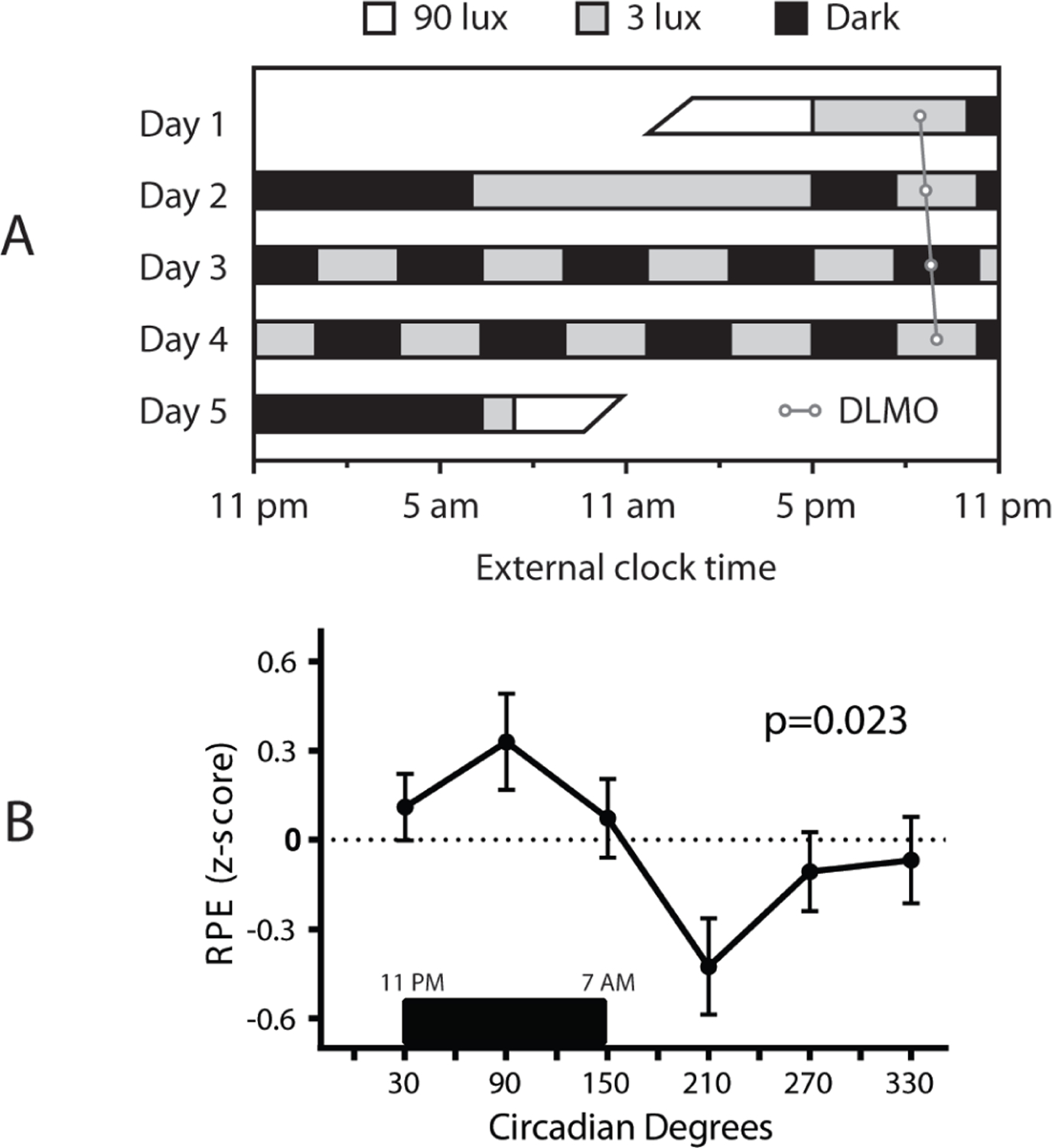Figure 1.

(A) Schematic of five days 5 hours 20 min of forced desynchrony protocol. Grey bars represent wakefulness in dim lighting (<3 lux), while black bars represent sleep opportunities (<0.1 lux). Rate of perceived exertion (RPE) was assessed during the same levels of mild intensity exercise performed during each standardised wake period. Circadian phase was assigned based on time of the dim light melatonin onset (DLMO) from salivary samples, indicated by open circles. The diagonal line through the DLMOs represents the free running rhythm of the central circadian clock in dim light. (B) A significant circadian rhythm of RPE, during identical exercise bouts, with greatest exertion during the biological night and least exertion in the late morning. Black bar represents the average times when sleep normally occurs in these participants (11 PM - 7 AM).
